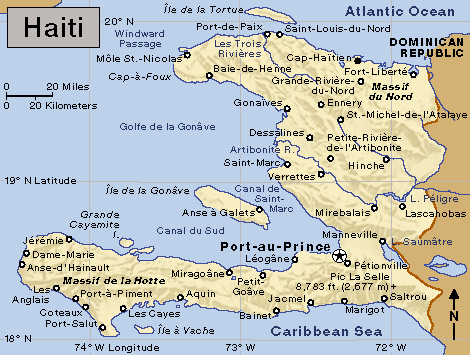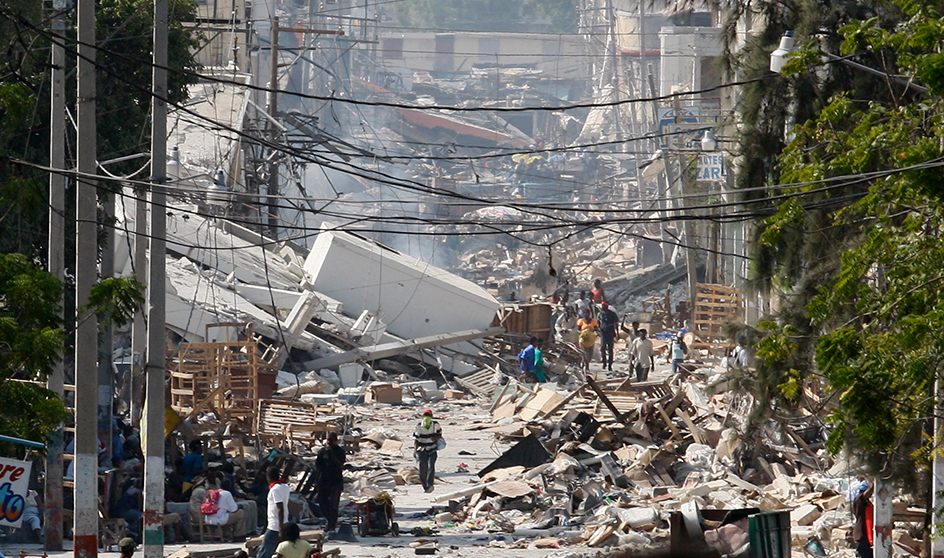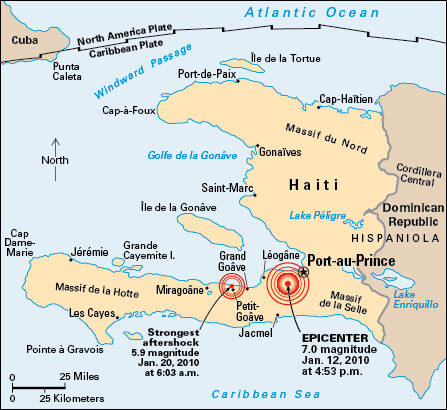Port-au-Prince, << pawrt oh PRIHNS, >> (pop. 977,790) is the capital and largest city of Haiti. It is on Haiti’s southwest coast, on the Golfe de la Gonave (Gulf of Gonave). The city is the commercial and political center of Haiti.

A majority of the city’s residents are of Haitian ancestry, but there are also many people of Syrian and Lebanese descent. The capital has many government buildings and several universities, including the State University of Haiti. Port-au-Prince has been home to a number of famous Haitian intellectuals, musicians, and writers. Today, it has a vibrant cultural life, with many museums and art galleries. The National Museum has exhibits on Haiti’s history.
Factories in Port-au-Prince make such products as cement, processed foods, rum, and textiles. Trade is important to the local economy. The city has bustling markets and Haiti’s only major airport, Toussaint Louverture International Airport.
French planters founded Port-au-Prince in 1749. It replaced Cap-Français (now Cap-Haïtien), in the north, as the capital of the French colony of Saint-Domingue in 1770. Also in 1770, Port-au-Prince suffered a terrible earthquake. In 1804, Port-au-Prince became the capital of the new nation of Haiti. Since then, owing to its political importance, the city has been the site of numerous political disturbances.
In the 1950’s, Haiti’s government invested a great deal in promoting tourism. Such events as the Bicentennial Exposition of 1949-1950, which marked the founding of Port-au-Prince, and annual Carnival celebrations attracted many visitors to the capital. Beginning around the same time, many rural Haitians moved to Port-au-Prince in search of a better life. This migration has strained the city’s infrastructure and social services and has led to overcrowding and an increase in poverty. It also has led to tensions rooted in social and political inequalities.
In 2010, a powerful earthquake struck Haiti near Port-au-Prince. Many buildings in the capital collapsed. The disaster killed tens of thousands of people in the city.


